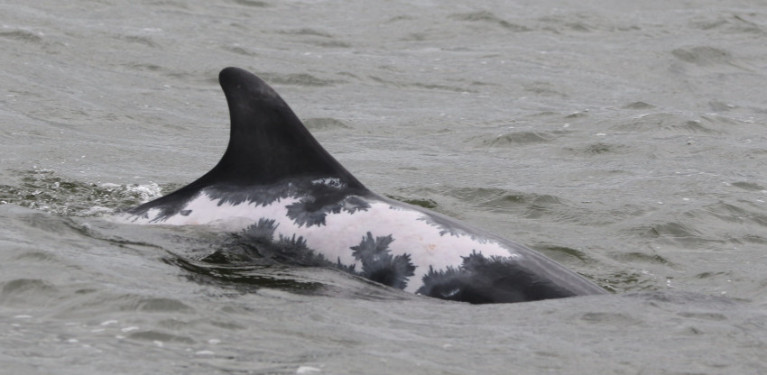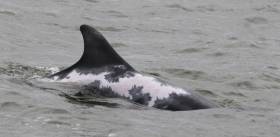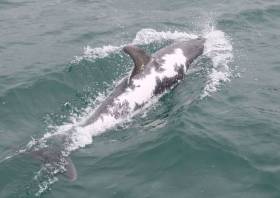Displaying items by tag: Spirtle
Miracle dolphin Spirtle has returned to her home waters in the north-east of Scotland after her summer spent off Ireland’s south-west coast, as BBC News reports.
The bottlenose dolphin with a distinctive sunburn scar was spotted with her family group in the Moray Firth this past Tuesday (17 December) — four months and hundreds of miles away from their last sightings in the waters off Co Kerry.
Spirtle initially surprised marine wildlife experts when she survived a live stranding ordeal in 2016 in which she suffered severe sunburn — and again this past summer when she and a number of her group were tracked heading south from Scotland through the Irish Sea.
A spokesperson for Whale and Dolphin Conservation said 2019 “has been a very unusual year for this dolphin population’s movements around the UK and overseas to the Dutch coast — it might not be quite finished yet”.
In other news, the Irish Whale and Dolphin Group (IWDG) says competition for food “seems to be growing more intense” for fin whales in the waters off Co Waterford, who made a more fleeting visit than usual for this time of year.
More Sightings Off Kerry Of Miracle Dolphin ‘Spirtle’
Marine wildlife miracle Spirtle appears to have taken up residence off the Kerry coast if the many sightings over recent weeks are anything to go by.
Last month the young dolphin was spotted in the area some weeks after she was seen off the East Coast, headed south from her usual haunt off the west of Scotland.
Indeed, it was there where she live stranded in 2016 and suffered severe sunburn, which left her with her distinctive markings.
Despite fears that she wouldn’t survive her ordeal, Spirtle returned to fine health and is now part of a small pod regularly feeding off Feit in Tralee Bay, and which includes a juvenile, according to the Irish Whale and Dolphin Group (IWDG).
Researchers are now trying to establish if Spirtle became part of this group after her long travels, or whether they swam with her from Scotland.
Initial evidence suggests at least two of her pod are Scottish regulars, including Spirtle’s own mother Porridge.
“We have documented movements of individual bottlenose dolphins between Ireland and Scotland before, but we do not know how often this occurs or whether it is typical behaviour,” the IWDG said.
“We hope to continue to monitor the presence of this famous ‘Scottish’ dolphin and see if she stays or travels further,” the group added.
Spirtle The Dolphin In High Spirits Off Kerry
Nearly two months after she was spotted off the East Coast, Spirtle the dolphin has been filmed frolicking off the shores of Kerry, as the Irish Mirror reports.
The young dolphin is distinctive for the heavy scarring and discolouration on her right flank — caused by severe sunburn wen she live stranded on a Scottish beach in 2016.
Having bounced back from that brush with death, her wounds gradually healing over the years, Spirtle was recently sighted at the lead of a group of bottlenose dolphins that was making its way south along the Irish Sea.
Marine wildlife experts are now trying to establish if this pod has now made it to the Kingdom, as Spirtle was caught on camera by Dr Joanne O’Brien in recent days with around 20 other bottlenose dolphins in Tralee and Brandon bays.
There is no word as yet on whether Spirtle and her colleagues paid a visit to Dingle’s longtime resident dolphin, Fungie.































































